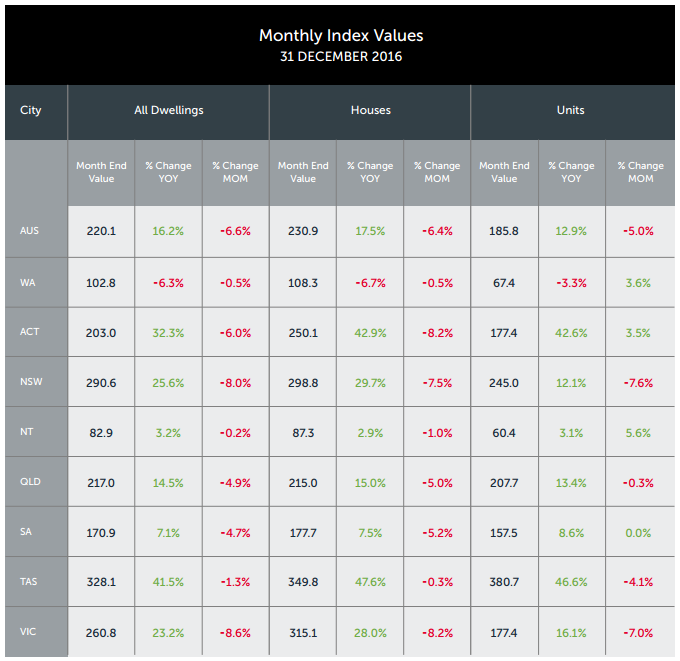After peaking in October and November, demand for property dropped in December with global real estate corporation
REA Group saying this could be due to recent out-of-cycle rate hikes.
In the
REA Group Property Demand Index, chief economist Nerida Conisbee said that the record price rises experienced in Sydney and Melbourne last year would be more subdued in 2017.
“The key drivers of this demand decline are likely due to Australian banks increasing interest rates for buyers independently of the Reserve Bank of Australia [
RBA] in late November and early December and continuing affordability issues across the eastern seaboard.”
With the RBA indicating it may still cut the official cash rate further, Conisbee said banks would not pass these cuts onto borrowers. Thus, expectations were that any out-of-cycle interest rate rises would continue.
“This will be a key issue for borrowers this year, especially first home buyers and investors, with access to cheap money becoming more difficult.”
The report calculated the number of online visits to REA Group sites over December against the average number of property listings. Final analysis revealed that New South Wales and Victoria experienced the greatest slump during December with demand in both states falling by 8.0% and 8.6% respectively.
The total breakdown for dwelling, house and apartment demand across all states can be found below with figures under “Month End Value” signifying the average level of demand. The higher the figure, the higher the demand in that state.

However, Rachelle Eyndhoven, commercial and residential mortgage broker and director of Sphere Finance, told
Australian Broker that she hadn’t noticed any reduced demand herself as a result of the recent rate rises.
“People generally want more of a comparison of the rate but it hasn’t slowed up any buyers at all,” she said. “I haven’t had any negative feedback at all from clients in regards to this other than they want to make sure they’re in the most competitive deal that they can be.”
For Sphere Finance, which is based on the NSW Central Coast, December was actually the biggest month the firm had ever had in the business, Eyndhoven said.
“I went to my first open home for the New Year with one of the agents on the weekend. They had 17 groups through and they exchanged contracts on Monday. It’s not a slow market in any stretch of the word.”
Related stories:
Dwelling sales down almost 9% for 2016
Annual property price growth weakest since 2013
Home loan demand on the downswing

.jpg)

